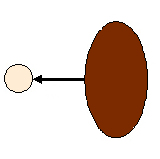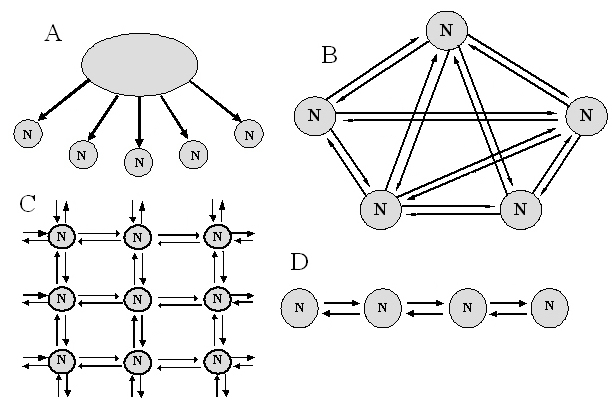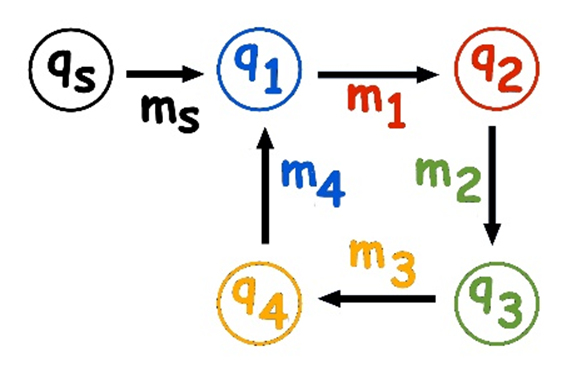


Alternative Migration Models
In population genetics, 'migration'
is gene flow among
populations, rather than periodic movement of
individuals between one place and another. In the simplest
model [left], the migration rate (m) is measured as the fraction
of alleles in the target population (tan) that are newly
arrived from the source population (brown). Migration is
unidirectional, and changes in the source population are
ignored.
(A) The Mainland / Island Model assumes that multiple offshore islands receive unidirectional migration from the Mainland. (B) The Island Model assumes that a species is divided into multiple sub-populations, each of which is connected to all of the others (this resembles an island archipelago). (C) The alternative Stepping-Stone Model assumes that sub-populations are connected only to adjacent sub-populations, in a nearest-neighbor grid. (D) Path Model assumes that each sub-population is connected only to those on either side of it, in linear sequence.
A more complex model [right] uses different allele frequencies q and different migration rates m among islands to model more complex results.
The models are drawn so as to suggest land islands surrounded by water. They are however equally applicable to ponds / lakes connected by watercourses. Model D in is readily adapted to a River model with unidirectional migration due to downstream flow.
(A) The Mainland / Island Model assumes that multiple offshore islands receive unidirectional migration from the Mainland. (B) The Island Model assumes that a species is divided into multiple sub-populations, each of which is connected to all of the others (this resembles an island archipelago). (C) The alternative Stepping-Stone Model assumes that sub-populations are connected only to adjacent sub-populations, in a nearest-neighbor grid. (D) Path Model assumes that each sub-population is connected only to those on either side of it, in linear sequence.
A more complex model [right] uses different allele frequencies q and different migration rates m among islands to model more complex results.
The models are drawn so as to suggest land islands surrounded by water. They are however equally applicable to ponds / lakes connected by watercourses. Model D in is readily adapted to a River model with unidirectional migration due to downstream flow.
Figures A, B, C, & D © 2013 by Sinauer; Text material © 2025 by Steven M. Carr